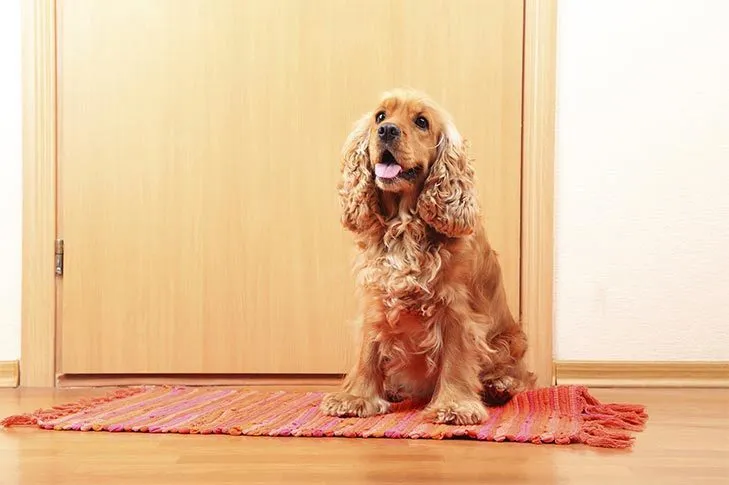Effective communication is a cornerstone of a strong bond between dogs and their owners. One of the most common challenges dog parents face is understanding when their furry friend needs to go outside. Instead of guessing or dealing with accidents, imagine a system where your dog can clearly signal their need. Teaching your dog to ring a bell to go out is an increasingly popular and highly effective method, providing a clear “voice” for your canine companion and significantly reducing frustration for both of you. This guide will walk you through the simple steps to implement this rewarding training.
Choosing the Right Communication Tool
Before you begin the training, you’ll need to select the right tool for your dog to use. There are a couple of excellent options available, each with its own advantages. The most straightforward and budget-friendly choice involves using bells that hang from your doorknob or are placed conveniently near the door. These are easy for dogs to nudge or paw, producing an audible signal.
For those looking for a more advanced approach, “talking buttons” are a high-tech alternative. These recordable buttons allow you to assign specific words, like “outside” or “potty,” which your dog can then press to communicate. This method, popularized by Christina Hunger’s “Hunger4Words,” can open up a wider vocabulary for your dog, allowing for more nuanced communication over time. However, for the primary goal of signaling to go outside, simple bells are often the quickest to teach and adopt.
 English Cocker Spaniel sitting on a rug near the door.
English Cocker Spaniel sitting on a rug near the door.
Step-by-Step Guide to Bell Training
The key to successfully teaching your dog to ring a bell to go outside lies in consistency and positive reinforcement. Unlike simply luring your dog to touch the bell with a treat, our goal is to help them independently communicate their need. By demonstrating the action repeatedly, your dog will naturally make the connection that ringing the bell is their way to request an outdoor break.
Step 1: Introduce the Bell
Begin by introducing your chosen bell or button to your dog. Allow them to inspect and explore it freely. The aim here is to ensure they are comfortable with the object and not apprehensive about it. Offer treats and praise for any interest or engagement they show with the bell, helping them form a positive association from the start.
Step 2: Establish the Association
Place the bell or button near the door you use most frequently for potty breaks. Each and every time you take your dog out, gently press the button or ring the bell yourself. Say a consistent phrase like “outside” or “potty.” The objective is to build a strong association: bell ringing equals going outside. This repetitive action is crucial for your dog to understand the cause and effect. Consistency on your part is paramount for this stage. This method also applies to other training challenges, similar to how to get dog not to pull on lead, where consistent action leads to desired behavior.
Step 3: Encourage Independent Ringing
Dogs are incredibly observant learners. After consistently watching you ring the bell before heading out, your dog will begin to understand the bell’s significance. Continue this routine until your dog starts to ring the bell on their own, without any cue from you. The moment your dog rings the bell independently, provide immediate and enthusiastic praise, and promptly take them outside. This reinforces their understanding and encourages them to repeat the behavior. It’s a wonderful moment when they grasp that this simple action grants them access to the outdoors.
The Benefits of a Shared Language
Most dogs quickly grasp the concept of ringing a bell or pushing a button to signal their need to go outside. Developing this shared language with your dog brings numerous benefits beyond just preventing accidents. It significantly reduces frustration in the household, as both you and your dog have a clear method of communication. This enhanced understanding naturally strengthens your bond, fostering a deeper connection built on mutual respect and clarity.
 French Bulldog laying next to a leash at the door waiting to be walked.
French Bulldog laying next to a leash at the door waiting to be walked.
Furthermore, a bell system allows your dog to communicate their core needs with other people in your home, such as family members or even a pet sitter, who might not be as attuned to your dog’s subtle natural signals. This can be especially helpful if you’re away, as the bell system helps your dog adjust better by ensuring their fundamental need for potty breaks is easily communicated. It’s a tool that empowers your dog and brings peace of mind to everyone involved in their care. Much like teaching a dog not to jump on visitors, establishing clear boundaries and communication tools leads to a more harmonious home environment. If you’re struggling with similar behavior issues, learning how to stop dogs jumping up at you can also contribute to a well-mannered pet.
Conclusion
Teaching your dog to ring a bell to go outside is a simple yet incredibly impactful training endeavor. It fosters better communication, reduces household accidents, and deepens the bond you share with your canine companion. By consistently following these steps and providing positive reinforcement, you’ll empower your dog with a clear way to express their needs, leading to a happier, more harmonious home for everyone. This small investment in training yields significant returns in understanding and partnership with your beloved pet.
